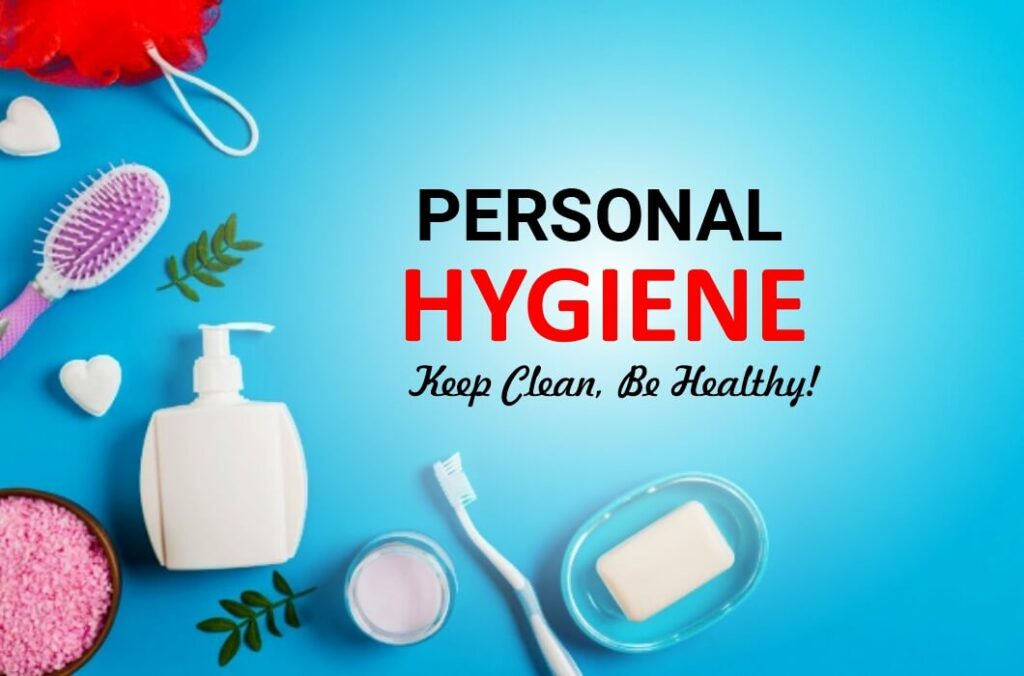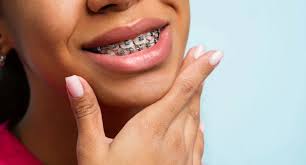-
Table of Contents
“Hygiene Practices: Safeguarding Health with Cleanliness”
Introduction:
Hygiene practices play a crucial role in preventing illness and maintaining good health. By practicing cleanliness in our daily lives, we can significantly reduce the risk of various infections and diseases. Proper hygiene habits encompass a range of practices, including personal hygiene, environmental cleanliness, and food safety. These practices involve simple actions such as handwashing, regular cleaning of surfaces, and maintaining a clean living environment. By adhering to these hygiene practices, we can create a healthier and safer environment for ourselves and those around us.
The Importance of Hand Hygiene in Preventing Illness
Hygiene Practices: Preventing Illness through Cleanliness
Maintaining good hygiene practices is crucial for preventing the spread of illness and disease. One of the most important aspects of hygiene is hand hygiene. Our hands come into contact with countless surfaces throughout the day, making them a breeding ground for germs. By practicing proper hand hygiene, we can significantly reduce the risk of getting sick and spreading illness to others.
The importance of hand hygiene cannot be overstated. Our hands are constantly in contact with various objects and surfaces, many of which may harbor harmful bacteria and viruses. From doorknobs to cell phones, we unknowingly pick up germs that can cause illness. By washing our hands regularly with soap and water, we can effectively remove these germs and reduce the risk of infection.
Proper handwashing technique is essential for effective hand hygiene. It is recommended to wet your hands with clean, running water and apply soap. Rub your hands together vigorously, making sure to lather the backs of your hands, between your fingers, and under your nails. Scrub for at least 20 seconds, which is roughly the time it takes to sing the “Happy Birthday” song twice. Rinse your hands thoroughly under running water and dry them with a clean towel or air dryer.
In situations where soap and water are not readily available, using hand sanitizers can be an effective alternative. Hand sanitizers should contain at least 60% alcohol to be effective against most germs. Apply a generous amount of sanitizer to the palm of your hand and rub it all over your hands until they are dry. However, it is important to note that hand sanitizers are not as effective as handwashing with soap and water when hands are visibly dirty or greasy.
Hand hygiene is particularly crucial in healthcare settings. Healthcare workers come into contact with sick patients and potentially harmful pathogens on a daily basis. By practicing proper hand hygiene, healthcare professionals can protect themselves and their patients from the spread of infections. This includes not only washing hands before and after patient contact but also following specific hand hygiene protocols, such as using hand sanitizers or wearing gloves when necessary.
In addition to preventing the spread of illness, proper hand hygiene can also help reduce the risk of foodborne illnesses. Many foodborne illnesses are caused by bacteria or viruses that can be easily transferred from contaminated hands to food. By washing hands before handling food, we can minimize the risk of contamination and ensure the safety of the meals we prepare.
Children should be taught the importance of hand hygiene from an early age. By instilling good handwashing habits in children, we can help them develop a lifelong practice that will protect their health and the health of those around them. Parents and educators should lead by example and encourage children to wash their hands regularly, especially before meals and after using the restroom.
In conclusion, hand hygiene plays a vital role in preventing the spread of illness and disease. By practicing proper handwashing techniques and using hand sanitizers when necessary, we can effectively remove harmful germs from our hands and reduce the risk of infection. Hand hygiene is particularly important in healthcare settings and can also help prevent foodborne illnesses. By instilling good handwashing habits in children, we can ensure a healthier future for generations to come.
Effective Cleaning and Disinfection Practices for a Healthy Environment
Effective Cleaning and Disinfection Practices for a Healthy Environment
Maintaining a clean and healthy environment is crucial for preventing the spread of illness and promoting overall well-being. In order to achieve this, it is essential to implement effective cleaning and disinfection practices. By following these practices, you can ensure that your surroundings are free from harmful bacteria and viruses, reducing the risk of illness for yourself and those around you.
First and foremost, it is important to establish a regular cleaning routine. This means setting aside dedicated time to clean and disinfect your living or working space. By doing so, you can prevent the buildup of dirt, dust, and germs that can lead to illness. Whether it is your home, office, or any other shared space, a consistent cleaning schedule is key to maintaining a healthy environment.
When it comes to cleaning, it is important to use the right tools and products. Start by gathering the necessary cleaning supplies, such as microfiber cloths, mops, and vacuum cleaners. These tools are designed to effectively remove dirt and dust from various surfaces. Additionally, using eco-friendly cleaning products can help minimize the use of harsh chemicals that may be harmful to both your health and the environment.
In order to effectively disinfect your surroundings, it is important to understand the difference between cleaning and disinfecting. While cleaning refers to the removal of dirt and debris, disinfecting involves killing germs and bacteria. To disinfect properly, it is crucial to use the appropriate disinfectants. Look for products that are specifically designed to kill a wide range of pathogens, including viruses and bacteria. Pay close attention to high-touch surfaces, such as doorknobs, light switches, and countertops, as these are often breeding grounds for germs.
In addition to using the right tools and products, it is important to follow proper cleaning techniques. Start by removing any visible dirt or debris from surfaces before applying disinfectant. This ensures that the disinfectant can effectively reach and kill any remaining germs. When applying disinfectant, be sure to follow the instructions on the product label, including the recommended contact time. This is the amount of time the disinfectant needs to remain on the surface in order to effectively kill germs. After the contact time has elapsed, wipe away any excess disinfectant using a clean cloth or paper towel.
To maintain a healthy environment, it is important to regularly clean and disinfect commonly used items and areas. This includes frequently touched surfaces, such as phones, keyboards, and remote controls. Additionally, regularly washing your hands with soap and water for at least 20 seconds is one of the most effective ways to prevent the spread of illness. Encourage those around you to practice good hygiene as well, as this will further reduce the risk of illness.
In conclusion, effective cleaning and disinfection practices are essential for maintaining a healthy environment and preventing the spread of illness. By establishing a regular cleaning routine, using the right tools and products, and following proper techniques, you can ensure that your surroundings are free from harmful bacteria and viruses. Remember to pay close attention to high-touch surfaces and frequently used items, and encourage good hygiene practices among those around you. By prioritizing cleanliness, you can create a safe and healthy environment for yourself and others.
Maintaining Personal Hygiene: Tips for a Healthy Lifestyle
Maintaining Personal Hygiene: Tips for a Healthy Lifestyle
Personal hygiene is an essential aspect of our daily lives. It not only helps us feel clean and fresh but also plays a crucial role in preventing illness and promoting overall well-being. By adopting good hygiene practices, we can protect ourselves and those around us from harmful bacteria, viruses, and other pathogens. In this article, we will explore some tips for maintaining personal hygiene and leading a healthy lifestyle.
First and foremost, regular handwashing is one of the most effective ways to prevent the spread of germs. Our hands come into contact with countless surfaces throughout the day, picking up bacteria and viruses along the way. By washing our hands with soap and water for at least 20 seconds, we can eliminate these harmful pathogens and reduce the risk of infection. It is especially important to wash our hands before eating, after using the restroom, and after coughing or sneezing.
In addition to handwashing, maintaining oral hygiene is crucial for overall health. Brushing our teeth at least twice a day helps remove plaque and prevent tooth decay and gum disease. It is recommended to use fluoride toothpaste and replace our toothbrush every three to four months. Flossing daily is also essential for removing food particles and bacteria from between our teeth, promoting healthy gums and preventing bad breath.
Furthermore, taking care of our skin is an integral part of personal hygiene. Regular bathing or showering helps remove dirt, sweat, and dead skin cells, keeping our skin clean and preventing body odor. It is advisable to use mild soap or body wash and warm water to avoid drying out the skin. After bathing, patting the skin dry with a clean towel and applying moisturizer can help maintain its natural moisture balance.
Another aspect of personal hygiene that often goes unnoticed is nail care. Keeping our nails clean and trimmed is essential for preventing the accumulation of dirt and bacteria. Long nails can harbor germs, which can easily be transferred to our mouth or other parts of our body. Regularly washing our hands and using a nail brush to clean under the nails can help maintain good nail hygiene.
Additionally, maintaining proper hygiene extends to our clothing and personal belongings. Wearing clean clothes and changing them regularly helps prevent the buildup of sweat, dirt, and bacteria. It is important to wash our clothes with detergent and hot water to ensure they are thoroughly cleaned. Similarly, regularly washing our bedding, towels, and other personal items can help eliminate germs and allergens, promoting a healthy living environment.
Lastly, practicing good hygiene also involves taking care of our hair. Regularly washing our hair with shampoo and conditioner helps remove dirt, oil, and product buildup, keeping our scalp clean and preventing dandruff. It is important to choose hair care products suitable for our hair type and avoid excessive use of heat styling tools, which can damage the hair.
In conclusion, maintaining personal hygiene is essential for a healthy lifestyle. By adopting good hygiene practices such as regular handwashing, oral care, skin care, nail care, and cleanliness of clothing and personal belongings, we can prevent the spread of illness and promote overall well-being. Incorporating these habits into our daily routine not only benefits ourselves but also those around us, creating a healthier and safer environment for everyone.In conclusion, practicing good hygiene is crucial in preventing illness and promoting overall health. Regular handwashing, proper sanitation, and maintaining cleanliness in our surroundings are effective measures to reduce the spread of germs and bacteria. By adopting these hygiene practices, we can significantly minimize the risk of contracting various diseases and maintain a healthier environment for ourselves and others.




